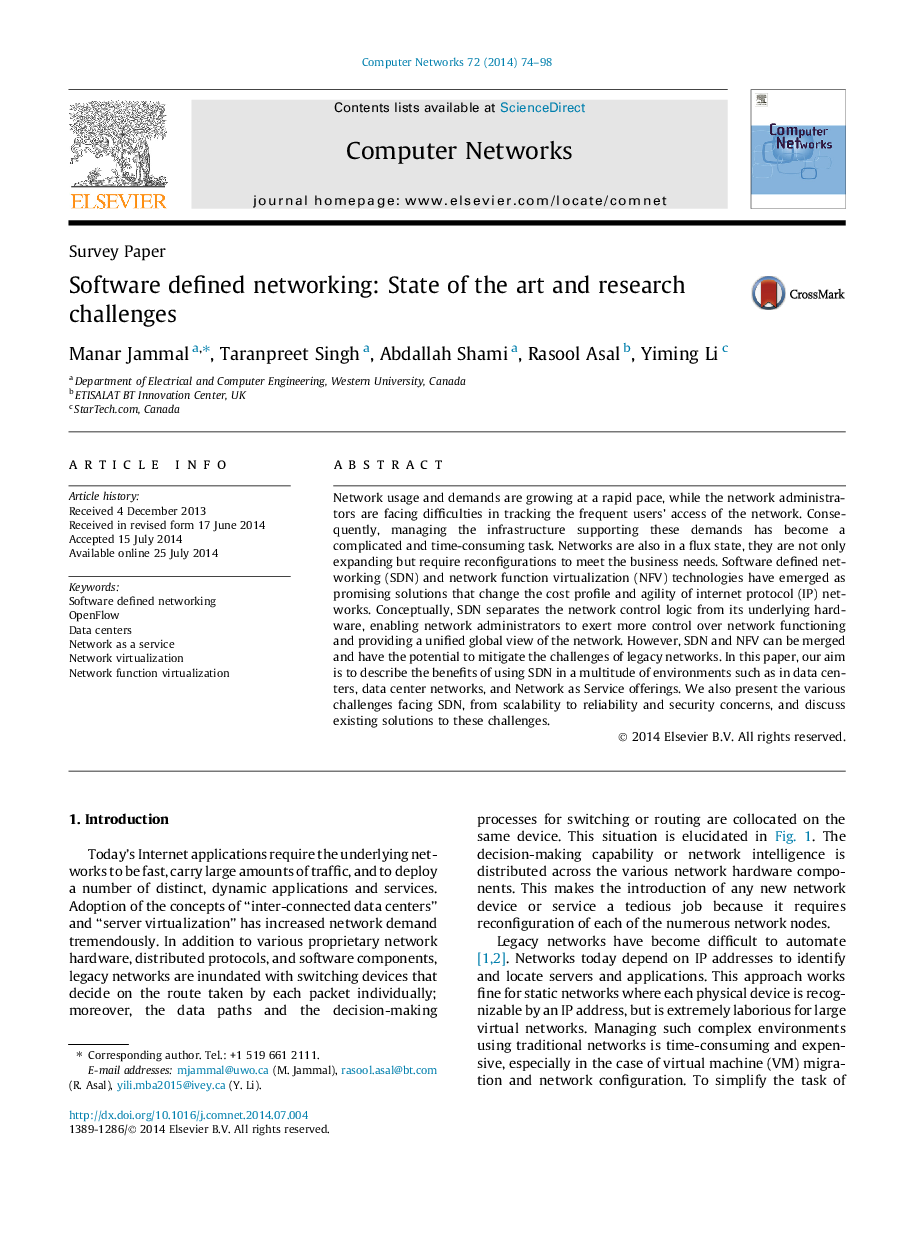| Article ID | Journal | Published Year | Pages | File Type |
|---|---|---|---|---|
| 451720 | Computer Networks | 2014 | 25 Pages |
Network usage and demands are growing at a rapid pace, while the network administrators are facing difficulties in tracking the frequent users’ access of the network. Consequently, managing the infrastructure supporting these demands has become a complicated and time-consuming task. Networks are also in a flux state, they are not only expanding but require reconfigurations to meet the business needs. Software defined networking (SDN) and network function virtualization (NFV) technologies have emerged as promising solutions that change the cost profile and agility of internet protocol (IP) networks. Conceptually, SDN separates the network control logic from its underlying hardware, enabling network administrators to exert more control over network functioning and providing a unified global view of the network. However, SDN and NFV can be merged and have the potential to mitigate the challenges of legacy networks. In this paper, our aim is to describe the benefits of using SDN in a multitude of environments such as in data centers, data center networks, and Network as Service offerings. We also present the various challenges facing SDN, from scalability to reliability and security concerns, and discuss existing solutions to these challenges.
